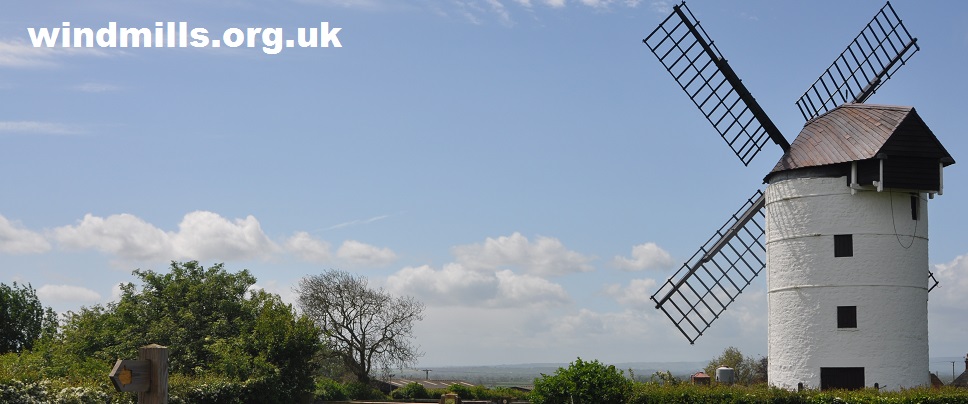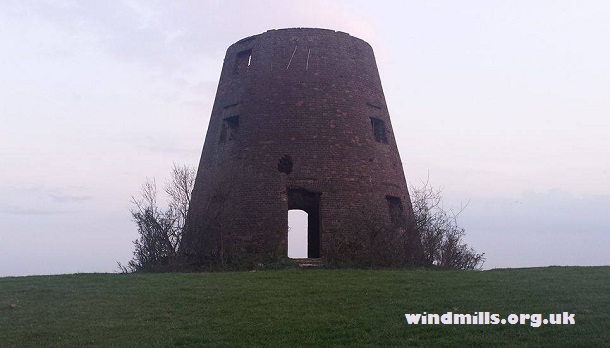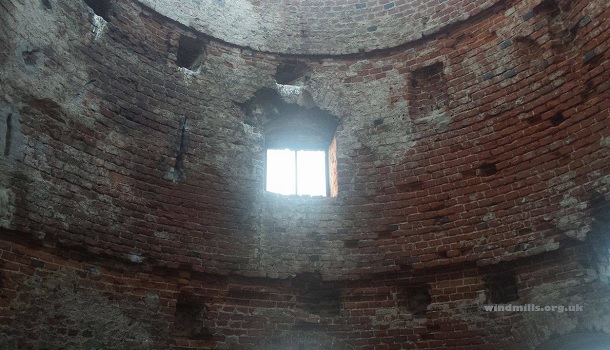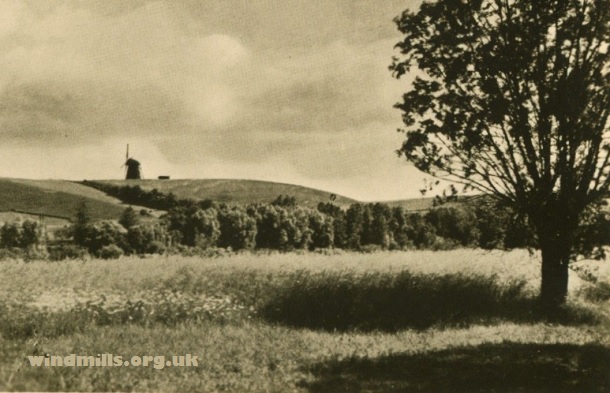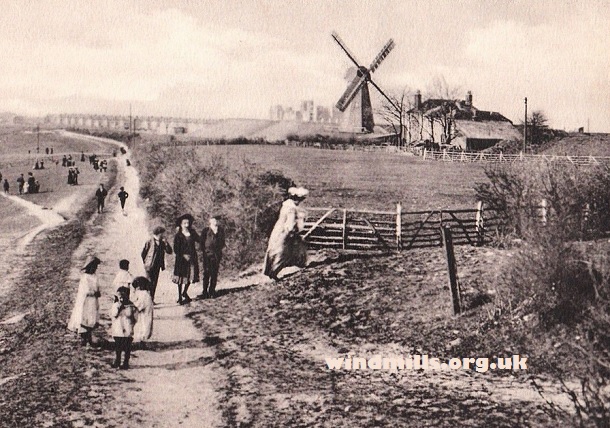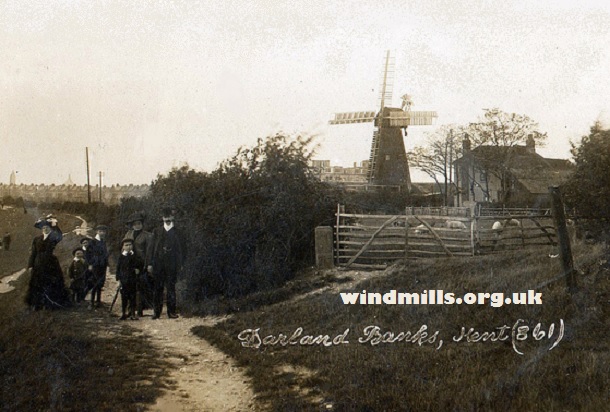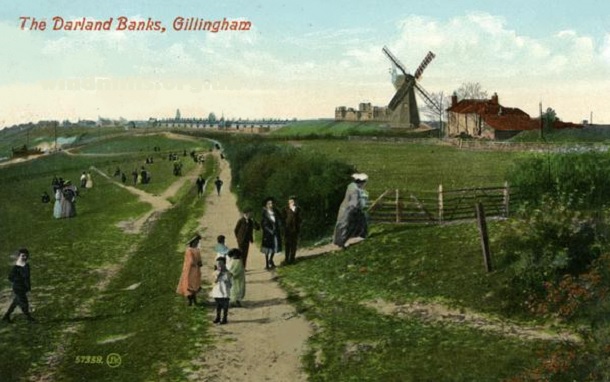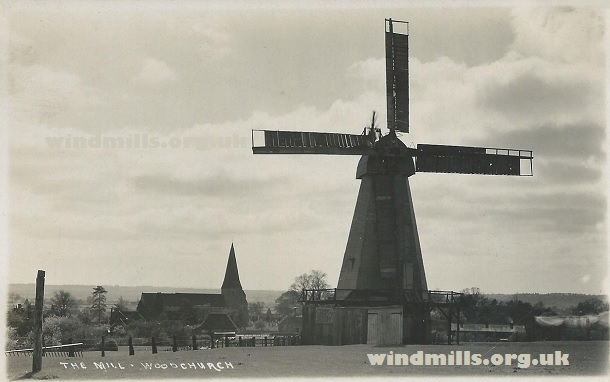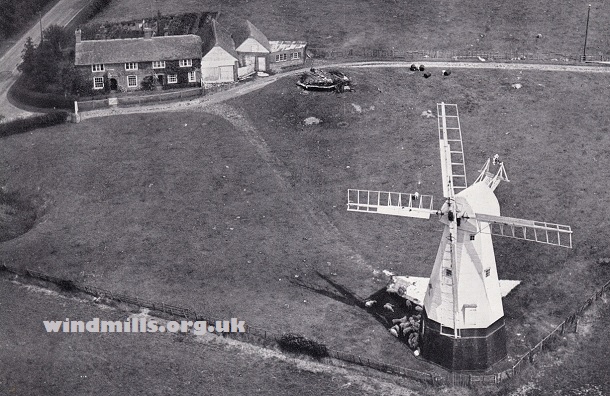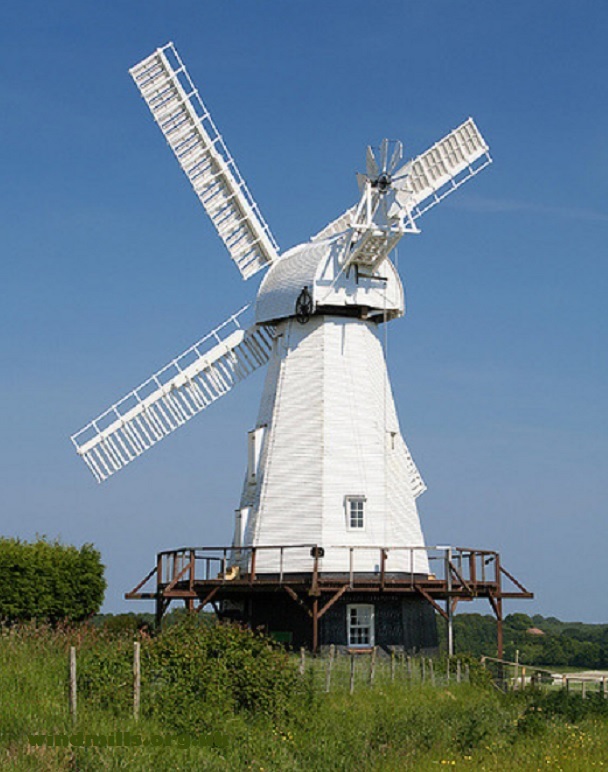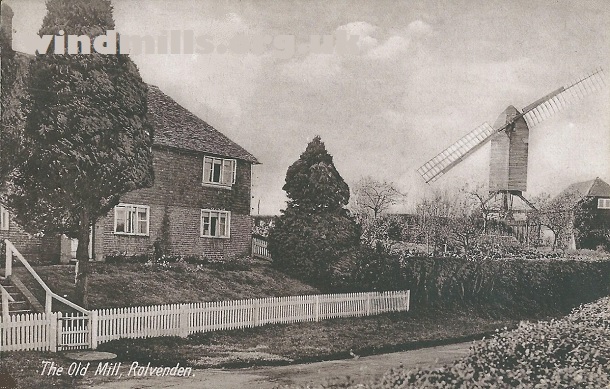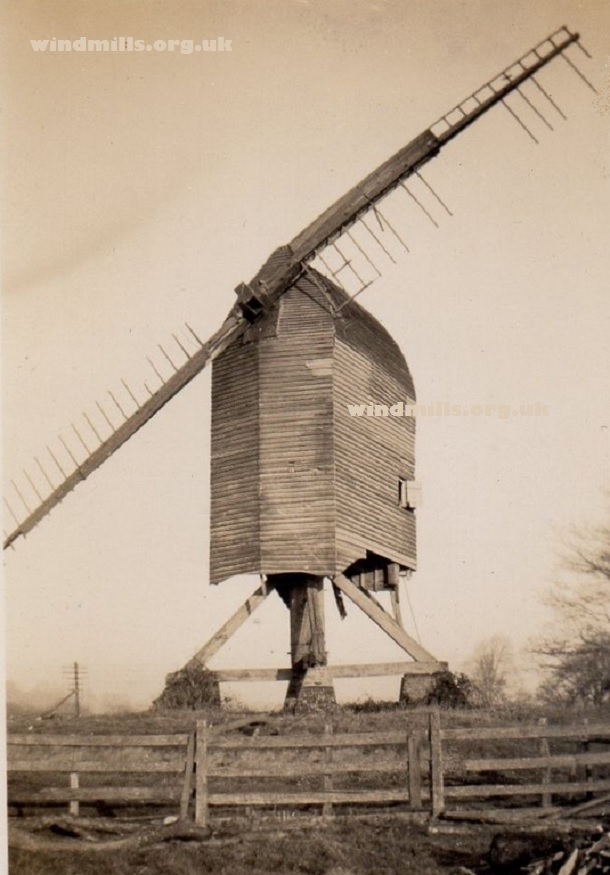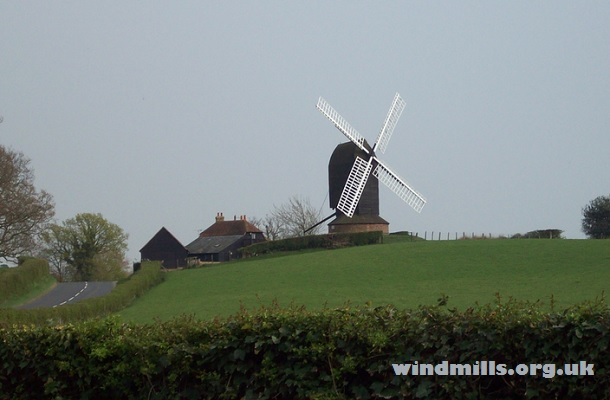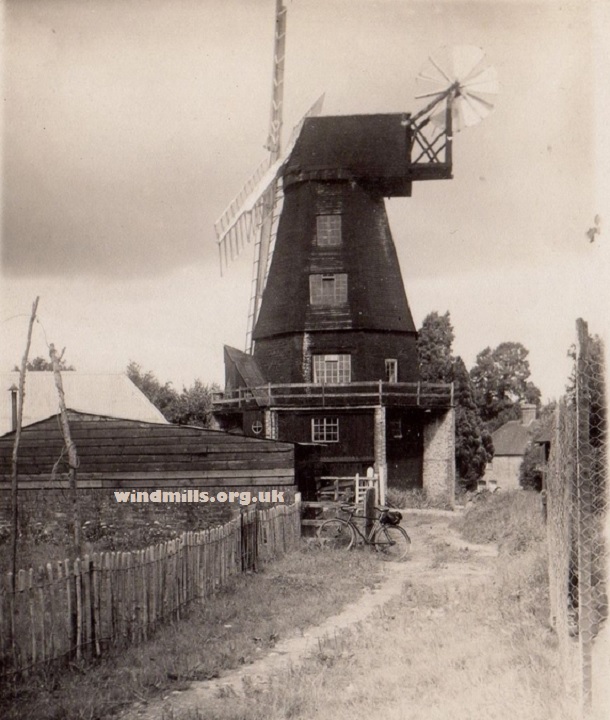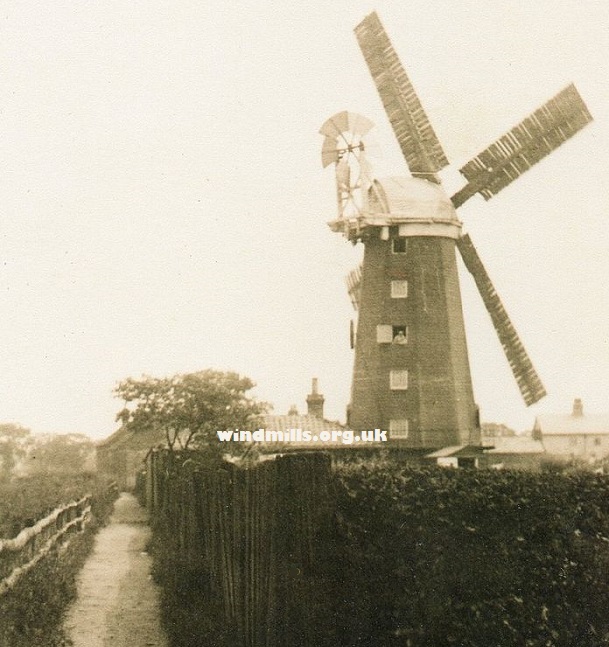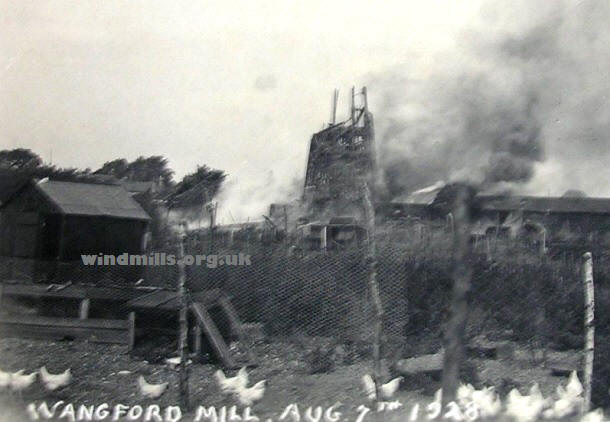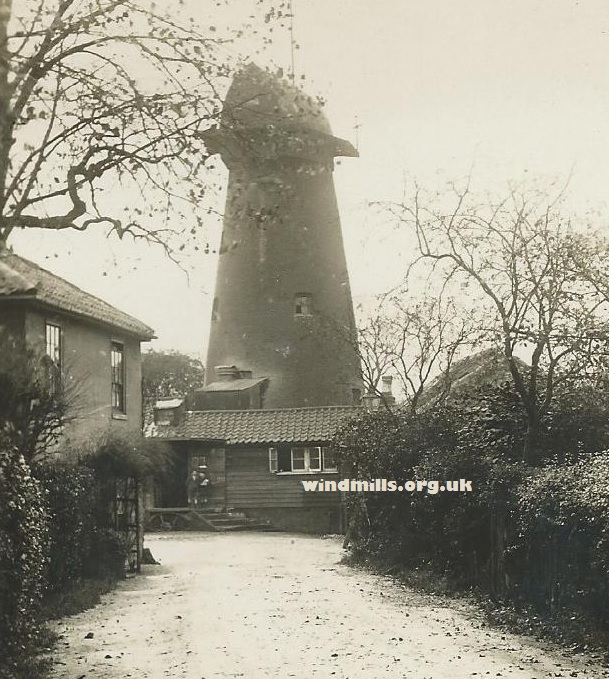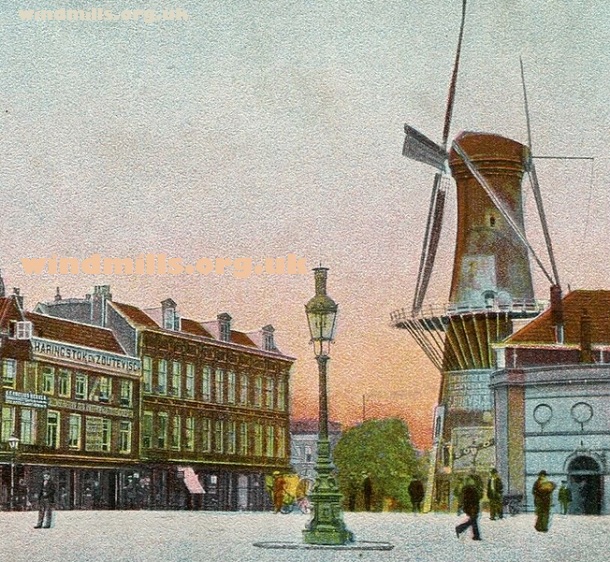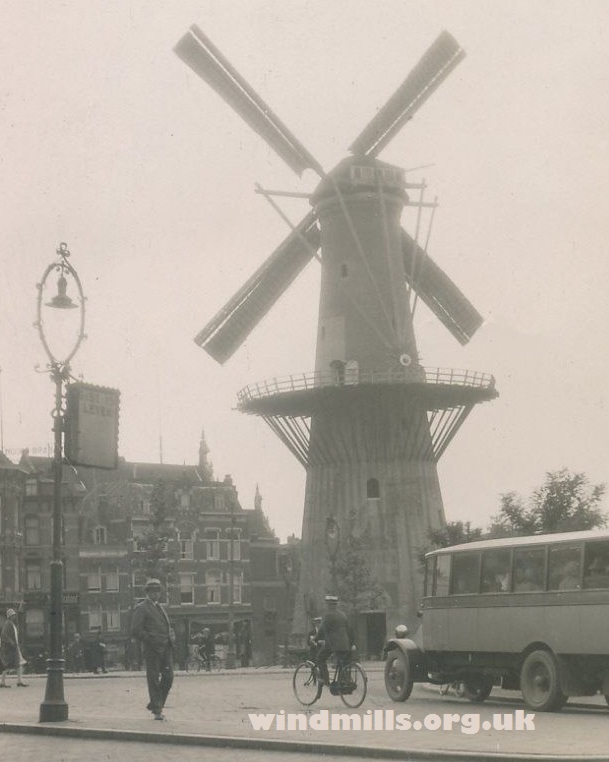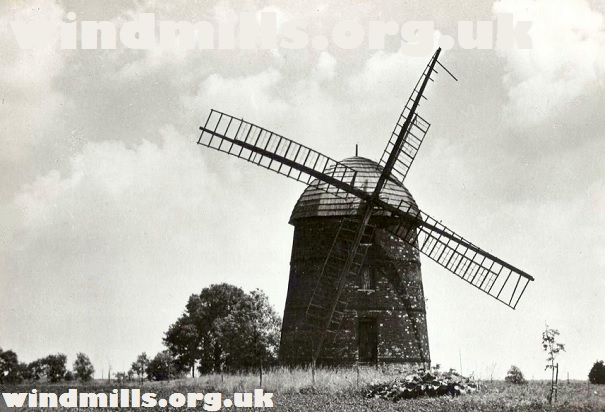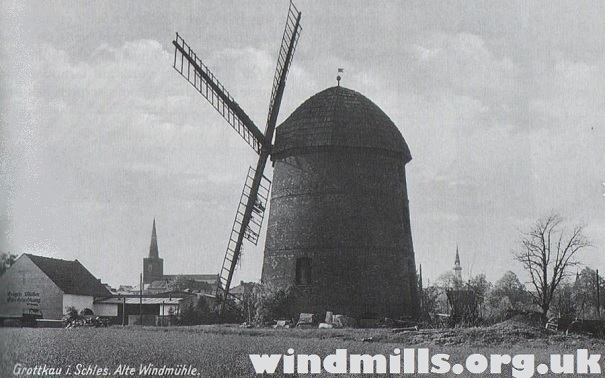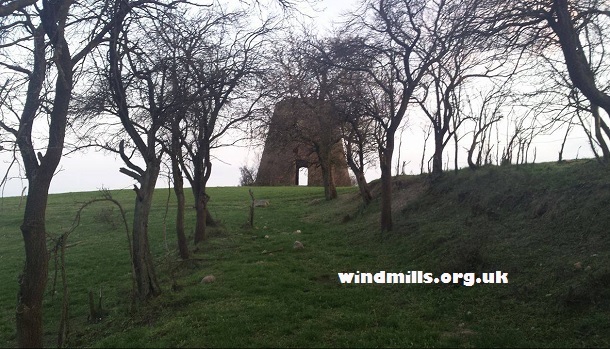
A photograph of what remains of Czechów Wiatrak as seen as from the ancient access track up to the mill.
Czechów Wiatrak is the ruined remains of a mid nineteenth century tower mill located on a hill just off the road between the villages of Czechów (former: Zechow) and Santok (former: Zantoch), near Gorzów, in Lubuskie, western Poland.
This Dutch-style tower mill consisted of three floors and had three entrance doors. It was most likely built sometime in the 1840s and probably went out of use immediately after the end of the Second World War, when this part of what was then Germany became part of Poland.
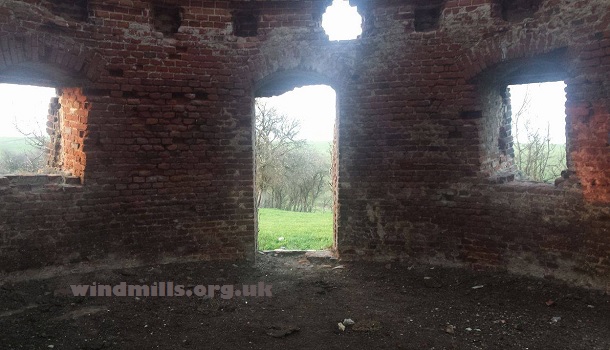
A ground floor view of the interior of the windmill on a hill overlooking the beautiful Warta (Warthe) River.
The beamed ceilings and floors, roof, interior workings, and sails of the windmill have long since disappeared and all that now remains is the brick-built tower, which stands at approximately nine metres high. During the communist period and after the interior walls were used by mountaineers in preparation for climbs in the Sudetan mountains and elsewhere.
All photographs by and copyright of Simon Haines for windmills dot org dot uk.
